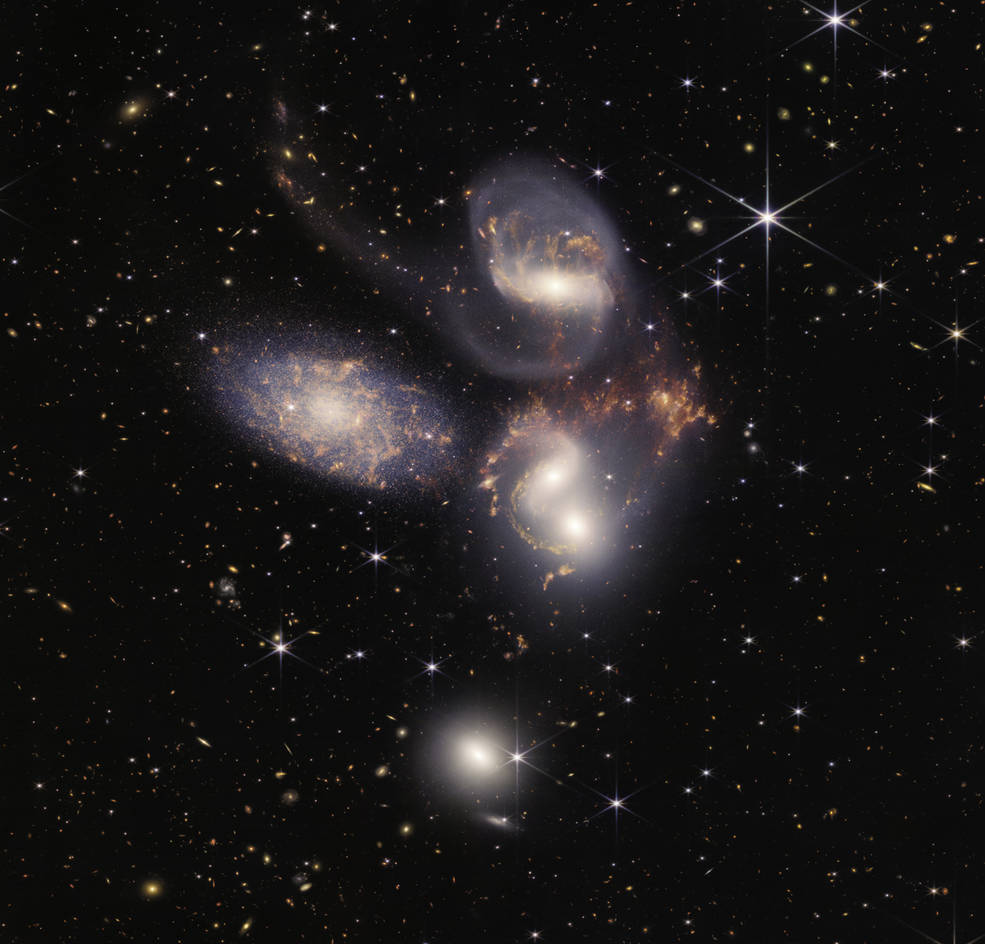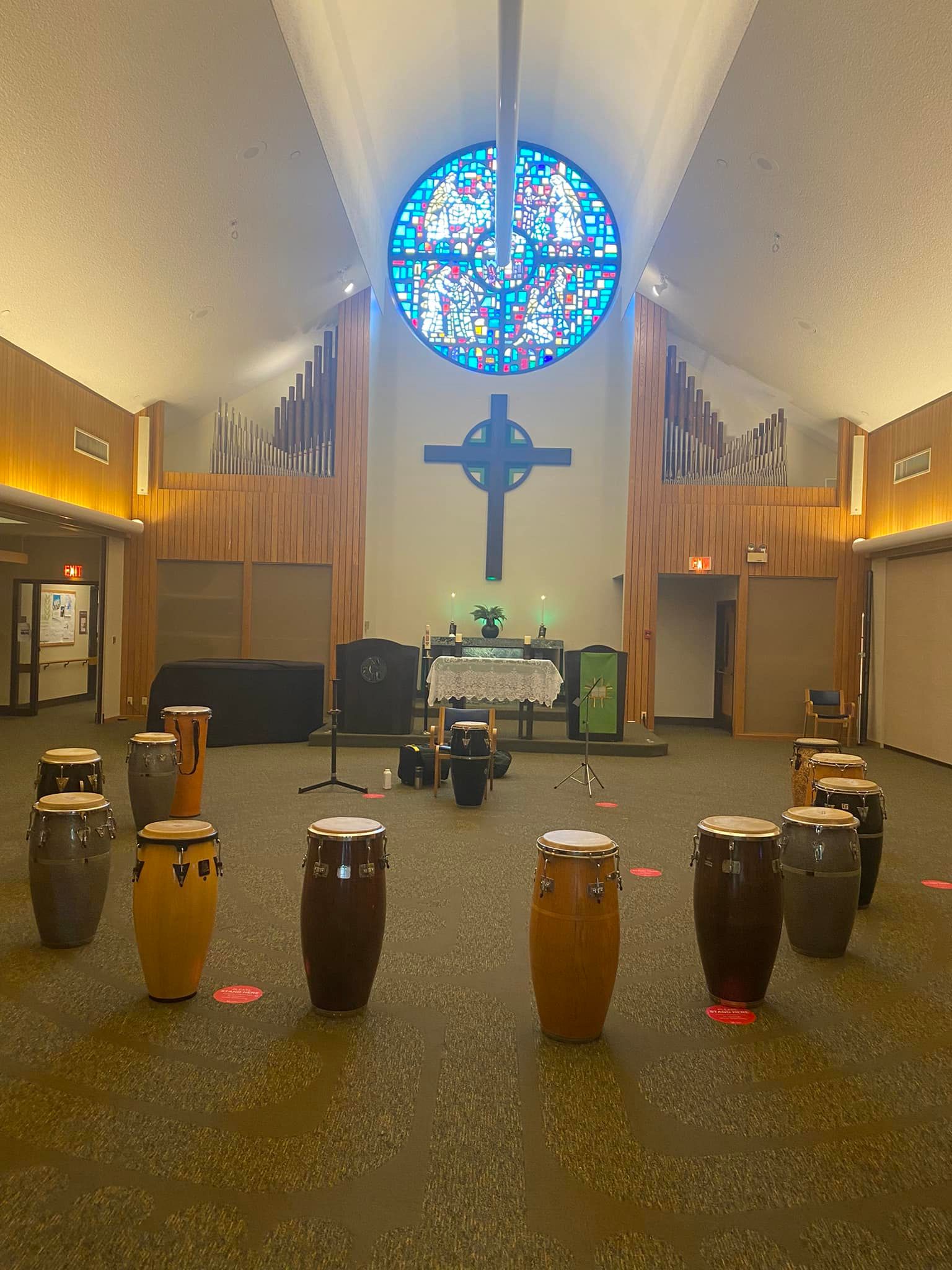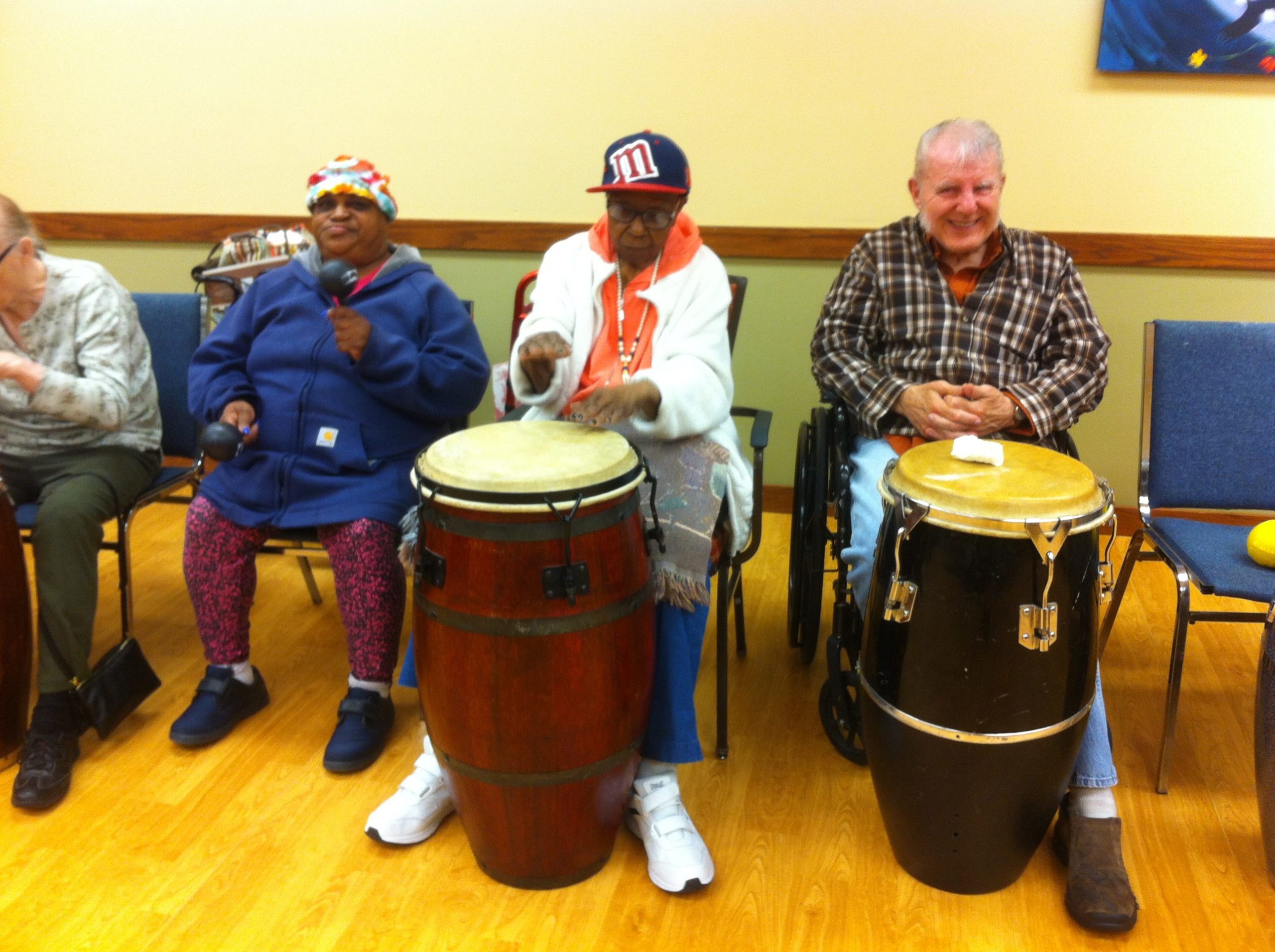Blog
Joseph Arthurlin Harriott (15 July 1928 – 2 January 1973) was a Jamaican jazz musician and composer, whose principal instrument was the alto saxophone.
Initially a bebopper, he became a pioneer of free-form jazz. Born in Kingston, Harriott moved to the United Kingdom as a working musician in 1951 and lived in the country for the rest of his life. He was part of a wave of Caribbean jazz musicians who arrived in Britain during the 1950s, including Dizzy Reece, Harold McNair, Harry Beckett and Wilton Gaynair.
Born in Kingston, Jamaica, Harriott was educated at Alpha Boys School, an orphanage in the city. At Alpha he learned to play the clarinet, the instrument that was assigned to him shortly before his tenth birthday. He took up the baritone and tenor saxophone while performing with local dance bands, before settling on the alto saxophone. Harriott arrived in London in the summer of 1951, aged 23, as a member of Ossie Da Costa’s band. British subjects did not require work permits or immigration visas at that time. When the band had completed their tour, Harriott decided to stay in London. He caught the attention of London’s jazz scene while sitting in at the Feldman Club on Oxford Street on 26 August 1951.
Like the majority of alto players of his generation, he was deeply influenced by Charlie Parker. Harriott developed a style that fused Parker with his own Jamaican musical sensibility – most notably the mento and calypso music he grew up with. Even in his later experiments, Harriott’s roots were always audible. However, it was his mastery of bebop that gained him immediate kudos within the British jazz scene upon his arrival in London.
more...Joseph Rudolph “Philly Joe” Jones (July 15, 1923 – August 30, 1985) was an American jazz drummer .
As a child, Jones appeared as a featured tap dancer on The Kiddie Show on the Philadelphia radio station WIP. He was in the US Army during World War II.
In 1947 he became the house drummer at Café Society in New York City, where he played with the leading bebop players of the day, including Tadd Dameron. From 1955 to 1958, Jones toured and recorded with Miles Davis Quintet — a band that became known as “The Quintet” (along with Red Garland on piano, John Coltrane on sax, and Paul Chambers on bass). Davis acknowledged that Jones was his favorite drummer, and stated in his autobiography that he would always listen for Jones in other drummers.
From 1958, Jones worked as a leader, but continued to work as a sideman with other musicians, including Bill Evans and Hank Mobley. Evans, like Davis, also openly stated that Jones was his all-time favorite drummer.
more...“Alegrías” is a festive flamenco style that belongs to “cantiñas” group (cantes de Cádiz). Its copla or stanza is usually composed by four octosyllabic verses. This is also called “alegría” stanza. Its melody is festive and incites to dance it. Its rhythm is influenced by “soleá” metric but in a more quickly way. It seems that this style comes from Navarre-Aragon “jota” and was established in Cádiz in french occupation and “Cortes de Cádiz” time. That’s the reason why its classic lyrics refers to Ebro river, “Virgen del Pilar” and Navarre. It is widely believed that Enrique Buitrón was the one who set the current flamenco style of “alegrías” and Ignacio Espeleta who introduced the characteristic “tiriti, tran, tran …” This “palo” has been interpreted by well-known artists: Enrique Mellizo, “Pinini” Pericón de Cadiz, La Perla de Cadiz, Chato de la Isla, Aurelio Selles, “El Folli” and Chano Lobato.
more...The five galaxies of Stephan’s Quintet, prominently featured at the beginning of the holiday film “It’s a Wonderful Life,” were seen with new eyes by the James Webb Space Telescope.
Located in the northern constellation Pegasus, Stephan’s Quintet consists of four galaxies that are tightly bound — cosmically speaking — about 290 million light-years away. In a coincidence of cosmic alignment, a foreground galaxy lurks on the left of the image about 40 million light-years from Earth.
“With its powerful, infrared vision and extremely high spatial resolution, Webb shows never-before-seen details in this galaxy group,” NASA said in a press release. “Sparkling clusters of millions of young stars and starburst regions of fresh star birth grace the image.
“Sweeping tails of gas, dust and stars are being pulled from several of the galaxies due to gravitational interactions,” NAS A said. “Most dramatically, Webb captures huge shock waves as one of the galaxies, NGC 7318B, smashes through the cluster.”
“This proximity provides astronomers a ringside seat for witnessing the merging and interactions between galaxies that are so crucial to all of galaxy evolution,” NASA said. “Rarely do scientists see in so much detail how interacting galaxies trigger star formation in each other, and how the gas in these galaxies is being disturbed. Stephan’s Quintet is a fantastic ‘laboratory’ for studying these processes fundamental to all galaxies.”

Angélique Kpasseloko Hinto Hounsinou Kandjo Manta Zogbin Kidjo born July 14, 1960), known as Angélique Kidjo, is a five-time Grammy Award winning Beninese singer-songwriter, actress, and activist who is noted for her diverse musical influences and creative music videos. Kidjo was born into a family of performing artists. Her father was a musician, and her mother worked as a choreographer and theatre director.
In 2007, Time magazine called her “Africa’s premier diva.” She performed at the Tokyo 2020 Olympic Games Opening Ceremony on July 23, 2021. On September 15, 2021, Time included her in their list of the 100 most influential people in the world.
Her musical influences include the Afropop, Caribbean zouk, Congolese rumba, jazz, gospel, and Latin styles; as well as her childhood idols Bella Bellow, James Brown, Nina Simone, Aretha Franklin, Celia Cruz, Jimi Hendrix, Miriam Makeba and Carlos Santana. She has recorded George Gershwin’s “Summertime“, Ravel’s Boléro, Jimi Hendrix’s “Voodoo Child” and the Rolling Stones‘ “Gimme Shelter“, and has collaborated with Dave Matthews and the Dave Matthews Band, Kelly Price, Alicia Keys, Branford Marsalis, Ziggy Marley, Philip Glass, Peter Gabriel, Bono, Yo-Yo Ma, Carlos Santana, John Legend, Herbie Hancock, Josh Groban, Dr John, the Kronos Quartet, Yemi Alade, Cassandra Wilson, Burna Boy, Sting, Mr Eazi and Indonesia’s pop star Anggun. Kidjo’s hit songs include “Agolo”, “We We”, “Adouma”, “Wombo Lombo”, “Afirika”, “Batonga“, and her version of “Malaika“. Her album Logozo is ranked number 37 in the Greatest Dance Albums of All Time list compiled by Vice magazine’s Thump website.
Kidjo is fluent in five languages: Fon, French, Yorùbá, Gen (Mina), and English. She sings in all of them, and she also has her own personal language, which includes words that serve as song titles such as “Batonga”. “Malaika” is a song sung in the Swahili language. Kidjo often uses Benin’s traditional Zilin vocal technique and vocalese.
more...Louis “Sabu” Martinez (July 14, 1930 – January 13, 1979) was an American conguero and percussionist. A prominent player in the Cubopmovement, Martinez appeared on many important recordings and live performances during that period. Martinez also recorded several Latin jazzalbums, now recognized as classics of the genre.
Born in New York City, Martinez made his professional debut in 1941 aged 11. He replaced Chano Pozo in Dizzy Gillespie‘s orchestra in 1948, and began performing with Benny Goodman‘s Bebop Orchestra in 1949. Over the next 15 years, Martinez worked with Charlie Parker, Duke Ellington, Count Basie, J. J. Johnson, Horace Silver, Thelonious Monk, Charles Mingus, Mary Lou Williams, Lionel Hampton, Noro Morales, Marcelino Guerra, Esy Morales, the Lecuona Cuban Boys, Miguelito Valdés, Tito Rodríguez, and the Joe Loco Trio. He also worked with vocalists Tony Bennett, Sammy Davis, Jr., and Harry Belafonte.
Martinez first recorded with Art Blakey in 1953, and contributed to his Orgy in Rhythm and Holiday for Skins projects from 1957 to 1958. Martinez became a bandleader in 1957, recording his debut album, Palo Congo, for the Blue Note label. He followed it up with releases on Vik and Alegre Records. Martinez moved to Sweden in 1967 and recorded with the Francy Boland–Kenny Clarke big band, releasing two albums. Subsequently, he led the group Burnt Sugar, which was active into the mid 1970s. On January 13, 1979, he died in Sweden at the age of 48 from a gastric ulcer.
more...Alan Dawson (July 14, 1929 – February 23, 1996) was an American jazz drummer and percussion teacher based in Boston.
Alan Dawson was born in Marietta, Pennsylvania, United States, and raised in Roxbury, Massachusetts. Serving in the U.S. Army during the Korean War, he played with the Army Dance Band while stationed at Fort Dix from 1951 to 1953. During his tenure, Alan explored the post-bop era by performing with pianist Sabby Lewis. After being discharged from the Army, Dawson toured Europe with Lionel Hampton.
In early 1960, he was based in Boston, for a regular engagement with John Neves, bass, and Leroy Flander, piano.
Dawson was an early teacher of drummers Tony Williams and Joseph Smyth, known for his work with the Sawyer Brown country music group. Other students included Terri Lyne Carrington, Julian Vaughn, Vinnie Colaiuta, Steve Smith, Kenwood Dennard, Gerry Hemingway, Jeff Sipe, Billy Kilson, Joe Farnsworth, and many others. Dawson began teaching at Berklee College of Musicin 1957. He suffered a ruptured disc in 1975 which led to him halting his touring schedule, to leave Berklee and limit his teaching to his home in Lexington, Massachusetts.
Dawson’s teaching style emphasized the music as a whole rather than concentrating on percussion alone. He stressed the importance of learning the melody and structure of the tune to better fulfill the role of accompaniment. For this purpose, he had students play over standards while also singing the melody out loud. He constantly strived for balance between musical ideas and strict technique. He was big on rudiments and wrote extensive exercises intended to be practiced with brushes. He believed using brushes with his “Rudimental Ritual” would reduce stick rebound, allowing the sense of “picking up” the sticks.
more...Woodrow Wilson Guthrie (/ˈɡʌθri/; July 14, 1912 – October 3, 1967) was an American singer-songwriter who was one of the most significant figures in American folk music. His work focused on themes of American socialism and anti-fascism. His music includes songs such as “This Land Is Your Land“, written in response to the American exceptionalist song “God Bless America“, and has inspired several generations both politically and musically.
Guthrie wrote hundreds of country, folk, and children’s songs, along with ballads and improvised works. Dust Bowl Ballads, Guthrie’s album of songs about the Dust Bowl period, was included on Mojo magazine’s list of 100 Records That Changed The World, and many of his recorded songs are archived in the Library of Congress. Songwriters who have acknowledged Guthrie as a major influence on their work include Bob Dylan, Phil Ochs, Johnny Cash, Bruce Springsteen, Robert Hunter, Harry Chapin, John Mellencamp, Pete Seeger, Andy Irvine, Joe Strummer, Billy Bragg, Jerry Garcia, Bob Weir, Jeff Tweedy, Tom Paxton, Brian Fallon, Sean Bonnette, and Sixto Rodríguez . He frequently performed with the message “This machine kills fascists” displayed on his guitar.
Guthrie was brought up by middle-class parents in Okemah, Oklahoma, until he was 14, when his mother Nora was hospitalized as a consequence of Huntington’s disease, a fatal hereditary neurological disorder. His father moved to Pampa, Texas, to repay debts from unsuccessful real estate deals. During his early teens, Guthrie learned folk and blues songs from his parents’ friends. He married at 19, but with the advent of the dust stormsthat marked the Dust Bowl period, he left his wife and three children to join the thousands of Okies who were migrating to California looking for employment. He worked at Los Angeles radio station KFVD, achieving some fame from playing hillbilly music, made friends with Will Geer and John Steinbeck, and wrote a column for the communist newspaper People’s World from May 1939 to January 1940.
Throughout his life, Guthrie was associated with United States communist groups, although he did not appear to belong to any. With the outbreak of World War II and the non-aggression pact the Soviet Union had signed with Germany in 1939, the anti-Stalin owners of KFVD radio were not comfortable with Guthrie’s political leanings after he wrote a song praising the Molotov–Ribbentrop Pact and the Soviet partition of Poland. He left the station, ending up in New York where he wrote and recorded his 1940 album Dust Bowl Ballads, based on his experiences during the 1930s, which earned him the nickname the “Dust Bowl Troubadour”.[13] In February 1940 he wrote his most famous song, “This Land Is Your Land“. He said it was a response to what he felt was the overplaying of Irving Berlin‘s “God Bless America” on the radio.
Guthrie was married three times and fathered eight children. His son Arlo Guthrie became nationally known as a musician. Woody died in 1967 from complications of Huntington’s disease. His first two daughters also died of the disease. During his later years, in spite of his illness, Guthrie became an icon in the folk movement, providing inspiration to a generation of new folk and country musicians, including mentoring Ramblin’ Jack Elliott and Bob Dylan. Woody Guthrie died of complications of Huntington’s disease on October 3, 1967. By the time of his death, his work had been discovered by a new audience, introduced to them through Dylan, Pete Seeger, Ramblin’ Jack Elliott, his ex-wife Marjorie and other new members of the folk revival, and his son Arlo.
more...Teaching a Rhythm Roots Workshop @ Walker Methodist Health Center (https://www.walkermethodist.org/locations/health-center). Working with Seniors celebrating world drumming and world cultures. On Wednesdays July 6th thru August 31st 2022. 1030am-noon.


This landscape of “mountains” and “valleys” speckled with glittering stars is actually the edge of a nearby, young, star-forming region called NGC 3324 in the Carina Nebula. Captured in infrared light by NASA’s new James Webb Space Telescope, this image reveals for the first time previously invisible areas of star birth.
Called the Cosmic Cliffs, Webb’s seemingly three-dimensional picture looks like craggy mountains on a moonlit evening. In reality, it is the edge of the giant, gaseous cavity within NGC 3324, and the tallest “peaks” in this image are about 7 light-years high. The cavernous area has been carved from the nebula by the intense ultraviolet radiation and stellar winds from extremely massive, hot, young stars located in the center of the bubble, above the area shown in this image.
The blistering, ultraviolet radiation from the young stars is sculpting the nebula’s wall by slowly eroding it away. Dramatic pillars tower above the glowing wall of gas, resisting this radiation. The “steam” that appears to rise from the celestial “mountains” is actually hot, ionized gas and hot dust streaming away from the nebula due to the relentless radiation.
Webb reveals emerging stellar nurseries and individual stars that are completely hidden in visible-light pictures. Because of Webb’s sensitivity to infrared light, it can peer through cosmic dust to see these objects. Protostellar jets, which emerge clearly in this image, shoot out from some of these young stars. The youngest sources appear as red dots in the dark, dusty region of the cloud. Objects in the earliest, rapid phases of star formation are difficult to capture, but Webb’s extreme sensitivity, spatial resolution, and imaging capability can chronicle these elusive events.
These observations of NGC 3324 will shed light on the process of star formation. Star birth propagates over time, triggered by the expansion of the eroding cavity. As the bright, ionized rim moves into the nebula, it slowly pushes into the gas and dust. If the rim encounters any unstable material, the increased pressure will trigger the material to collapse and form new stars.
Conversely, this type of disturbance may also prevent star formation as the star-making material is eroded away. This is a very delicate balance between sparking star formation and stopping it. Webb will address some of the great, open questions of modern astrophysics: What determines the number of stars that form in a certain region? Why do stars form with a certain mass?
Webb will also reveal the impact of star formation on the evolution of gigantic clouds of gas and dust. While the effect of massive stars – with their violent winds and high energy – is often apparent, less is known about the influence of the more numerous low-mass stars. As they form, these smaller stars create narrow, opposing jets seen here, which can inject a lot of momentum and energy into the clouds. This reduces the fraction of nebular material that seeds new stars.
Up to this point, scientists have had very little data about the influence of the multitude of young and more energetic low-mass stars. With Webb, they will be able to obtain a full census of their number and impact throughout the nebula.
Located roughly 7,600 light-years away, NGC 3324 was imaged by Webb’s Near-Infrared Camera (NIRCam) and Mid-Infrared Instrument (MIRI).

Peter Michael Escovedo (born July 13, 1935 in Pittsburg, California) is an American percussionist.
With his two brothers, Pete formed Escovedo Bros Latin Jazz Sextet, before Carlos Santana hired Pete and Coke Escovedo for his group.[2] He led the 14–24 piece Latin big band Azteca. His daughter is singer-percussionist Sheila E. They were both presented with the Latin Grammy Lifetime Achievement Award in 2021.
more...Albert Ayler (/ˈaɪlər/; July 13, 1936 – November 25, 1970) was an American avant-garde jazz saxophonist, singer and composer. After early experience playing R&B and bebop, Ayler began recording music during the free jazz era of the 1960s. However, some critics argue that while Ayler’s style is undeniably original and unorthodox, it does not adhere to the generally accepted critical understanding of free jazz. In fact, Ayler’s style is difficult to categorize in any way, and it evoked incredibly strong and disparate reactions from critics and fans alike. His innovations have inspired subsequent jazz musicians.
His trio and quartet records of 1964, such as Spiritual Unity and The Hilversum Session, show him advancing the improvisational notions of John Coltrane and Ornette Coleman into abstract realms where whole timbre, and not just mainly harmony with melody, is the music’s backbone. His ecstatic music of 1965 and 1966, such as “Spirits Rejoice” and “Truth Is Marching In”, has been compared by critics to the sound of a brass band, and involved simple, march-like themes which alternated with wild group improvisations and were regarded as retrieving jazz’s pre-Louis Armstrong roots. Ayler disappeared on November 5, 1970, and he was found dead in New York City’s East River on November 25, a presumed suicide. For some time afterwards, rumors circulated that Ayler had been murdered, with a long-standing urban legend that the Mafia had tied him to a jukebox.
more...
Leroy Vinnegar (July 13, 1928 – August 3, 1999) was an American jazz bassist. Born in Indianapolis, Indiana, United States, the self-taught Vinnegar established his reputation in Los Angeles, California, during the 1950s and 1960s. His trademark was the rhythmic “walking” bass line, a steady series of ascending or descending notes, and it brought him the nickname “The Walker”. Besides his jazz work, he also appeared on a number of soundtracks and pop albums, notably Van Morrison‘s 1972 album, Saint Dominic’s Preview.
more...NASA’s James Webb Space Telescope has produced the deepest and sharpest infrared image of the distant universe to date. Known as Webb’s First Deep Field, this image of galaxy cluster SMACS 0723 is overflowing with detail.
Thousands of galaxies – including the faintest objects ever observed in the infrared – have appeared in Webb’s view for the first time. This slice of the vast universe covers a patch of sky approximately the size of a grain of sand held at arm’s length by someone on the ground.
This deep field, taken by Webb’s Near-Infrared Camera (NIRCam), is a composite made from images at different wavelengths, totaling 12.5 hours – achieving depths at infrared wavelengths beyond the Hubble Space Telescope’s deepest fields, which took weeks.
The image shows the galaxy cluster SMACS 0723 as it appeared 4.6 billion years ago. The combined mass of this galaxy cluster acts as a gravitational lens, magnifying much more distant galaxies behind it. Webb’s NIRCam has brought those distant galaxies into sharp focus – they have tiny, faint structures that have never been seen before, including star clusters and diffuse features. Researchers will soon begin to learn more about the galaxies’ masses, ages, histories, and compositions, as Webb seeks the earliest galaxies in the universe.

Christine Anne McVie (born Anne Christine Perfect on 12 July 1943) is an English musician, singer and songwriter, and the lead vocalistand keyboardist of Fleetwood Mac, which she joined in 1970. She has also released three solo albums. Her direct but poignant lyrics focus on love and relationships. AllMusic describes her as an “Unabashedly easy-on-the-ears singer/songwriter, and the prime mover behind some of Fleetwood Mac’s biggest hits.” Eight of her songs appeared on Fleetwood Mac’s 1988 Greatest Hits album.
In 1998, McVie was inducted into the Rock and Roll Hall of Fame as a member of Fleetwood Mac, and received the Brit Award for Outstanding Contribution to Music. The same year, after almost 30 years with the band, she opted to leave and lived in semiretirement for nearly 15 years. She released a solo album in 2004. In September 2013, she appeared on stage with Fleetwood Mac at London’s O2 Arena. She rejoined the band in 2014 prior to their On with the Show tour.
In 2006, McVie received a Gold Badge of Merit Award from Basca, now The Ivors Academy. In 2014, she received the Ivor Novello Award for Lifetime Achievement from the British Academy of Songwriters, Composers and Authors, and was honored with the Trailblazer Award at the UK Americana Awards in 2021. She is also the recipient of two Grammy Awards.
more...More Posts
- Ben Riley Day
- Joe Morello Day
- World Music with Lingling Yu & Guo Gan
- Daily Roots with Rula Brown
- The Cosmos with M91
- Rubén Blades Day
- Desmond Dekker Day
- Cal Tjader Day
- World Music with Hà Nội Duo
- Daily Roots with Earl Sixteen ft Ranking Joe
- The Cosmos with Sun and ISS
- John Bream Day
- Philly Joe Jones
- Washboard Sam Day
- World Fusion with Mehdi Nassouli & Enza Pagliara
- Daily Roots with Little Roy
- The Cosmos with NGC 3147
- Angelique Kidjo Day
- Kenny Napper Day
- Alan Dawson Day